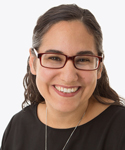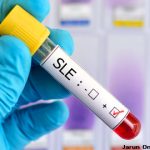In the overall cohort, researchers noted a familial recurrence rate of 19.4 in first-degree relatives. This rate was 5.4 in second-degree family and 3.0 in third-degree relatives. When they looked at childhood- vs. adult-onset SLE, rates were higher in first- and second-degree relatives of adult-onset SLE patients (25.2 vs. 18.4 in first-degree relatives and 8.5 vs. 4.5 in second-degree relatives). However, third-degree relatives showed a higher rate of adult-onset SLE (P=2.2×10-4 for differences in recurrence proportions between childhood- and adult-onset SLE).
“The pattern for childhood-onset SLE is that there are a large number of risk factors in general and a more polygenic cause of the disease,” says Dr. Niewold. “In adult-onset SLE, the pattern that fits best was that of a single strong risk factor and other more moderate risk factors that were less polygenic and epistatic, meaning there is less evidence for interaction between genes.”
No Phenotype Differences Found
Researchers found no phenotype differences between patients from multi-case SLE families when compared with families with a single-case of SLE for disease onset, duration, cumulative SLEDAI scores, last visit ACR Damage Index or number of ACR criteria. Although some reports have suggested SLE families have fewer male children, researchers in this study found no evidence of sex skewing in the offspring of SLE patients.
“We had wondered if the reason a younger person gets SLE is because they have a stronger set of risk factors, and I think this study bears that out,” says Dr. Niewold.
Understanding Genotyping Differences
The next step is to conduct genotyping to gain a better understanding of the differences between childhood- and adult-onset SLE. The authors conclude that their findings suggest “adult‐onset SLE may be characterized by fewer risk factors that are individually stronger” and that childhood-onset SLE involves “a higher genetic load.” If confirmed, this concept may lead to new ways to treat the different presentations of SLE.
The Genetic Load of Lupus
According to Tamar Rubinstein, MD, assistant professor of pediatric rheumatology at Children’s Hospital at Montefiore, Bronx, N.Y., this study is important in an effort to better define the genetic load associated with lupus.
“This is one of the few articles, to my knowledge, that has addressed differences in genetic susceptibility between adult-onset SLE and childhood-onset disease,” she says. “It makes sense that the genetic susceptibility will be different between the two, and not only because one presents earlier. This study adds to our knowledge by showing different patterns of inheritance with a higher genetic load in childhood-onset SLE.”



